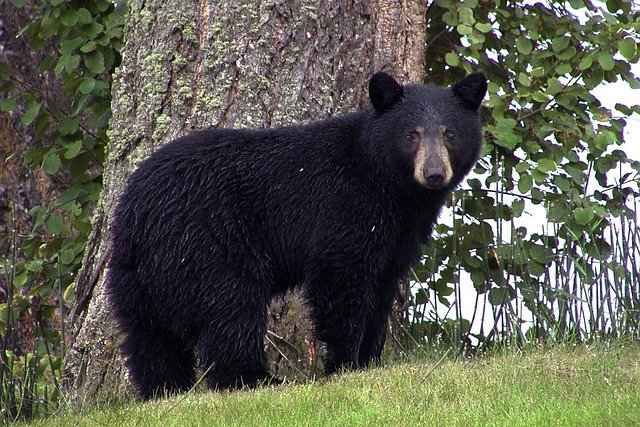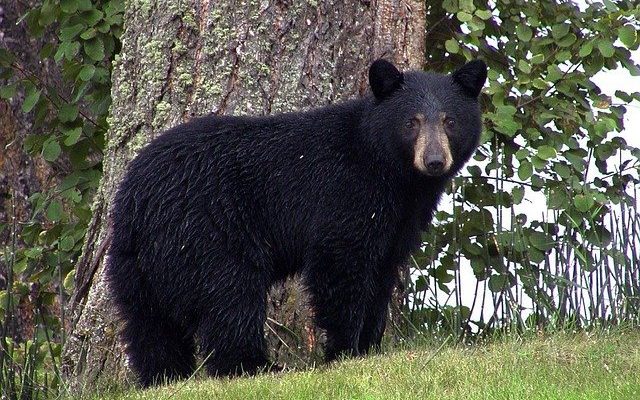
Let’s take a closer look at these remarkable creatures. From their unique features to their surprising habits, black bears are full of surprises. Whether you’re a nature enthusiast or someone who’s just curious about wildlife, you’ll find that the world of black bears is truly fascinating.
1. Black Bears Come in Different Colors
You might picture a black bear as dark as night, but here’s the twist: they come in a variety of colors! While their name suggests they’re all black, many can be brown, cinnamon, or even blond. This variation comes from their genetics and habitat.
For instance, in certain areas of North America, you can find black bears with a light brown coat. These bears often blend in with their surroundings, making them harder to spot. It’s like nature’s way of giving them a camouflage suit. Isn’t that cool?
2. They’re Excellent Climbers
Here’s the thing: you might think of bears as hefty animals that can’t move quickly. But black bears are fantastic climbers! With strong limbs and sharp claws, they can scale trees like they’re made for it.
Climbing helps them escape predators and find food. Often, they’ll climb to munch on acorns or berries. Imagine seeing a bear effortlessly shimmy up a tree to grab a snack—it’s like watching a natural acrobat in action!
3. Black Bears Have a Huge Range
When it comes to their home turf, black bears are quite the travelers. They inhabit forests across North America, from Canada down to Mexico. This broad range means they can adapt to many environments.
Some black bears have massive territories that can span thousands of acres. It’s like they’re on a never-ending road trip! They roam around in search of food and mates, showing remarkable instincts and adaptability to different ecosystems.
4. They’re Omnivores, Not Just Meat Eaters
If you think all bears are meat-loving predators, think again! Black bears are actually omnivores, which means they eat a variety of foods, both plants and animals. Their diet includes fruits, nuts, insects, and even small mammals at times.
In spring, they search for tender greens and dandelions, while in fall, they feast on acorns and berries to fatten up for winter. Imagine a bear munching on berries as a summer snack—sounds adorable, right? Their diverse diet helps them thrive in various habitats.
5. Hibernation Isn’t Just Sleeping
You might be wondering about hibernation. It’s more than just a long nap! For black bears, hibernation is a survival strategy. They don’t truly sleep the entire time. Instead, they enter a state of torpor where their heart rate and metabolism drop significantly.
During this period, they can go months without eating. Remarkably, female bears can give birth while hibernating, and the cubs will stay safe and warm until spring. It’s like having a cozy home away from home!
6. A Mother’s Love: Raising Cubs
Black bear mothers are incredibly nurturing. After a bear gives birth, she stays with her cubs for about a year. During this time, she teaches them how to find food, climb trees, and avoid danger.
Cubs are born blind and weigh less than a pound, but with their mother’s protection and guidance, they grow quickly. It’s heartwarming to think of a mama bear tenderly caring for her little ones in the wild, ensuring they grow up strong and knowledgeable.
7. They Communicate in Various Ways
Bears don’t just growl and roar—they communicate in various fascinating ways! They use vocalizations, body language, and even scents to express themselves.
For instance, if a bear feels threatened, it might huff or clap its jaws. And they use scent-marking by rubbing against trees or leaving droppings in key areas to communicate with other bears about their territory. It’s like an elaborate social network, but in the wild!
8. Black Bears Play an Important Ecological Role
Every animal has its part in the ecosystem, and black bears are no exception. As omnivores, they help control plant and animal populations. Their foraging habits also contribute to seed dispersal, promoting forest growth.
When they munch on berries and fruits, they help plants reproduce. Imagine a bear wandering through a forest, unknowingly planting the seeds of the next generation of trees and shrubs—talk about nature’s gardeners!
9. They’re Quick on Their Feet
Despite their size, black bears can run surprisingly fast—up to 30 miles per hour! That’s as fast as a racehorse! This speed comes in handy when they need to escape danger or chase after food.
Picture a bear sprinting across a field; it’s both impressive and intimidating! Their speed is a key survival trait, allowing them to navigate their environment efficiently.
10. Conservation Efforts for Black Bears
Sadly, black bears face threats from habitat loss and hunting. Fortunately, many conservation programs are in place to protect them. National parks and wildlife reserves play crucial roles in preserving their habitats and ensuring their survival.
You might even come across educational programs aimed at raising awareness about their importance to the ecosystem. It’s heartening to know that efforts are being made to protect these magnificent creatures for future generations.
In conclusion, black bears are not just ordinary wildlife; they are extraordinary animals with fascinating traits and behaviors. From their climbing skills to their nurturing nature, there’s so much to admire. As we continue to learn about and protect them, we can ensure that these magnificent bears remain a vital part of our natural world. Remember, the next time you hear about a black bear, you’ll have a treasure trove of facts to share!

